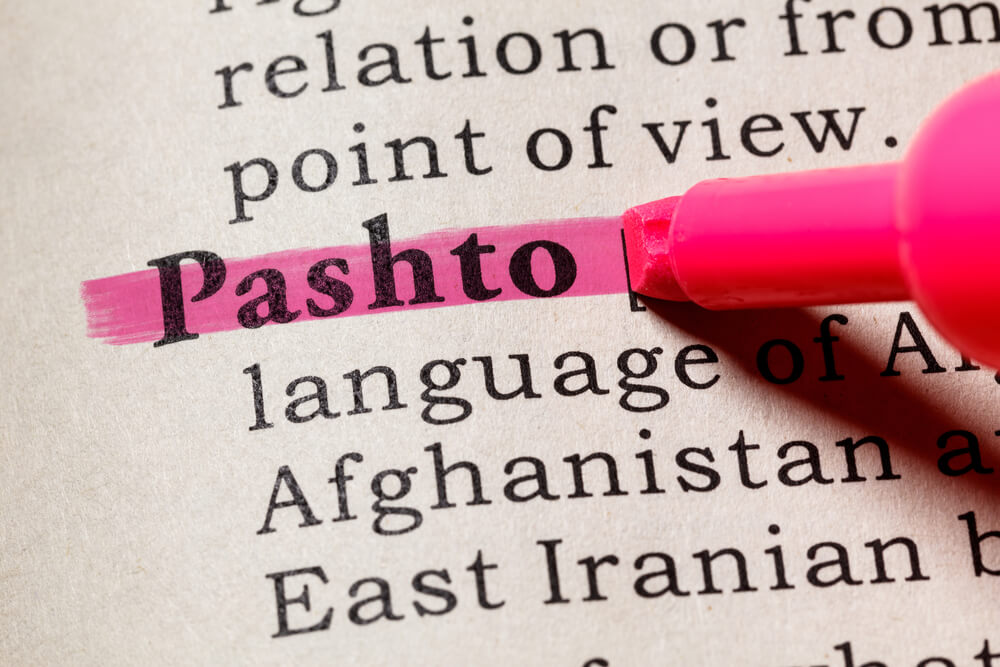Pashtun Culture – Importance of Pashtun Culture in Pakistan
Pashtun Culture has been debated for many years, for its origin needs to be better documented. But before we get into that discussion, we need to know some interesting facts about the Pashtun Culture.
Pashtun Culture is unique and has many different aspects to it. However, the most significant elements of Pashtun Culture are language, literature, cuisine, festivals, and music.
Pashtun, also spelled Pakhtun or Pushtun, constitutes the largest ethnic group of Afghanistan’s population. Pashtun was called Afghans when there was no recognition of the boundaries.
The Pashto Culture is rich in traditions and has a variety of customs that are too interesting to know about. But, if you ever visit a Pashtun family, you’ll be amazed to see their hospitality; Pashtun is the most hospitable nation in the world and will always make you feel at home.
When talking about the Pashtun Culture, we can’t miss mentioning their cuisine; the word delicious is not even enough to describe it. Each dish or meal of Pashtun cuisine has its unique flavor.
Pashtun Culture in Pakistan is filled with a large number of festivals, which are celebrated with great joy and enthusiasm. In addition, the most beautiful weddings you’ll ever see are those of Pashtuns; the wedding affair is colorful with music and a delicious feast.
Let’s dig into this article to learn more about the Pashtun Culture, traditions, and customs.
History and Origin of Pashtun Culture
The Pashtun people are an ethnic group who originate from Afghanistan and Pakistan. They are one of the largest ethnic groups in the world and have a rich culture steeped in history. The Pashtun Culture is a unique blend of Afghan and Pakistani influences. It is a culture that is very proud of its heritage and traditions.
If we look back at the origin of Pashtun Culture, it’s indeed based on Pashtunwali and Islam, Pashtunwali being an old way of life. However, history has been disputable, but a consensus has yet to be formed. So, there are a lot of theories about the origin of Pashtuns.
According to these theories, Pashtuns are descended from Jews, Arabs, and Aryans or have a mixed origin. But no idea was convincing enough to help people make a decision. So Pathan has always been curious about their race’s origin, which has given birth to many theories.
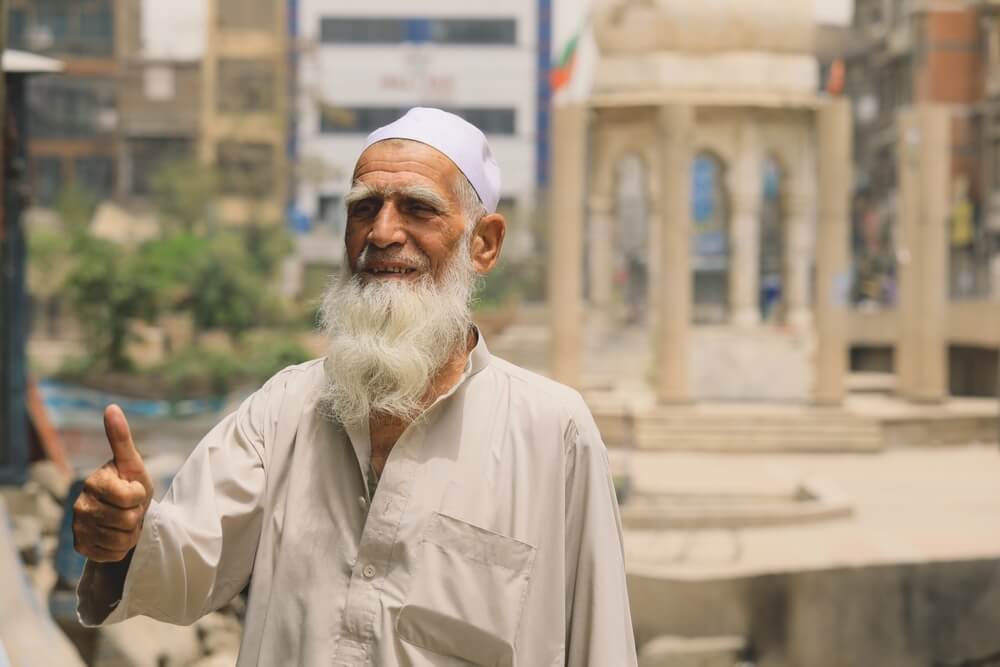
Another theory states Pashtuns are the descendants of the ancient Afghans. The name “Pashtun” and “Pathan” are similar and have the same meaning, i.e., the one who truly belongs to the Pathan nation. Therefore, it is believed that Pashtuns are the original inhabitants of Afghanistan.
Pashtun Culture is very ancient. It is a mixture of Chinese, Indian, Mongolian and Persian cultures. Pashtuns have always been known for their bravery and courage. They are also very proud and independent people. They have a long history of resisting foreign invaders and a robust code of honor.
The Pashto Culture is very traditional. The family is the most fundamental unit of society, and great importance is placed on hospitality and generosity.
Pashto Language
Pashto is the primary language of the Pashtun people. It is a member of the Iranian branch of the Indo-European family of languages. In historical Persian literature, the language is known as Afghani.
Pashto is spoken by around 40-60 million people as their native language, mainly in Afghanistan and Pakistan.
Pashto language, also spelled as Pashtu or Pakhtu, was spoken initially by Pashtun; it was declared the national language of Afghanistan in the 1930s. Small communities who talk to Pashto also reside in Iran, Tajikistan, United Arab Emirates, and the United Kingdom, other than Pakistan and Afghanistan.
Although scholars couldn’t find the exact origin of the Pashto language, it’s believed to be in close contact with some other languages and borrowed lots of words from these. Ancient Greek, Parthian, Saka, and Persian are those languages that have helped Pashto grow.
Pashto is an Indo-European language and has some similarities with the Sanskrit languages and Balochi and Sindhi. However, Pashto acquired loanwords and retroflex sounds from these languages, so it’s a mixture of different languages.
The Pashto language has two central dialects; the southern and the northern. The former preserves the ancient “sh” and “zh” sounds, and the latter preserves the “Kh” and “Gh” sounds. The sounds which have an audible breath are familiar with Pashto’s neighboring Indo-Aryan languages but aren’t much common in Pashto.
The Pashto language is beautiful; if you ever get a chance to learn a word or two, don’t miss it!
Pashtun Culture Literature
Pashto literature is one of the richest and most beautiful in the world. It mixes different influences from neighboring cultures, such as Persian and Arabic.
The earliest examples of Pashto literature are the works of the 18th-century poet Mohammad Hotak’s Pata Khazana. His work, “The Hidden Treasure,” is a famous poetry collection from the 8th century onwards.
Other critical early writers include Khushal Khan Khattak (the national poet of Afghanistan), who wrote in the 17th century and did fantastic work by writing spontaneous and forceful poetry. His work was indeed a masterpiece. Moreover, his grandson Afzal Khan wrote the early history of Pashtun magnificently.
The history of Pashto literature spans over 5000 years and has its roots in the form of oral tappa, a tradition of its time.
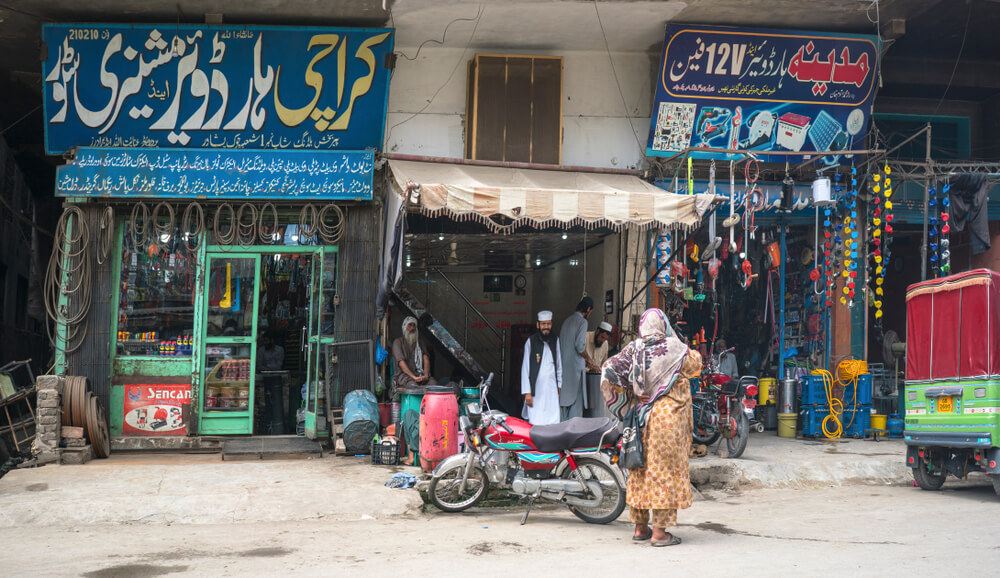
Besides that, Amir Kror Suri is considered the pioneer poet of the Pashto language. He’s also a legendary character in Afghan national history and a warrior poet.
Pir Roshan of the 16th century brought his Sufi school of thought and began preaching his beliefs to others. His work was so influential that it gave Pashto poetry and literature a new life with a more assertive tone.
The first book on Sufism in Pashto literature was Khair-ul-Bayan, a bitterly criticized thesis. Nevertheless, Pir Roshan had many disciples who later became the most famous poets, writers, and scholars of their time and did excellent jobs.
Pashtun Culture Dresses
Just like their traditions and customs, Pashtuns take pride in their dresses; they’re very particular about their dress and appearance. Usually, Pashtuns wear the same clothing wherever they are. Still, you’ll see more modern Pathans in the United Kingdom and the United Arab Emirates because they slowly adapted to their country’s Culture. Still, they dress modestly and are very careful about their appearance.
There are two types of Pashtun dresses, one for men and the other one for women, which we will discuss in detail below:
Men’s Dress in Pashtun Culture
The traditional dress for men is called the “Qmis,” which consists of a long and loose shirt that goes down to the knees and a shalwar which is the full trousers tied at the waist with a string. In addition, they usually wear a west or waistcoat over their dress and a shawl or scarf called “chaddar” wrapped around their shoulders in the winter season or on special occasions.
Adult Pashtun males also wear Pagray, a turban that’s a significant part of their dress, for they consider it their honor.
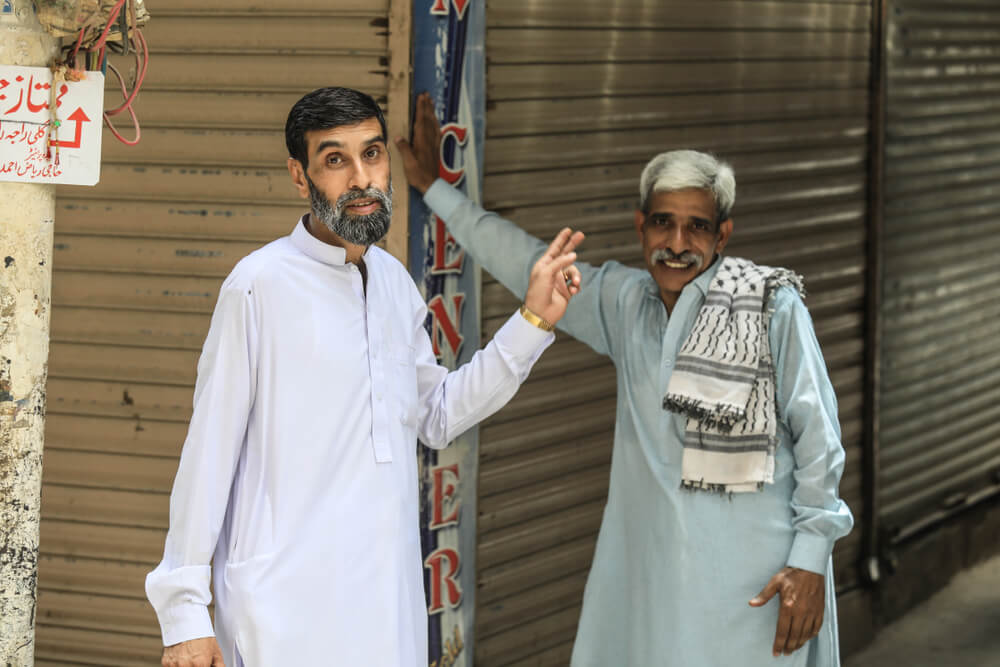
The turban consists of long strips of cloth tied around the head, and the forehead isn’t covered because it has to be touched to the ground during the prayer. The turban is tied in a way that leaves one end dangling, and that’s used for wiping the sweat off the face.
Women’s Dress in Pashtun Culture
Pashtun females also dress very modestly and elegantly at the same time. They wear a long shirt or “kameez,” which covers their body and reaches their mid-calf or ankle. Over this, they wear a loose-fitting scarf called “dupatta,” which covers their head and chest.
Rural Pashtun females wear baggy black or colored trousers and a long shirt belted with a sash. City women wear the same dress with a cotton cloth to cover their heads. Pashtun women are conscious of their appearance and wear a burqa that protects them from head to toe over their regular clothing.
Pashtun Culture Cuisine
Pashtun cuisine is straightforward and not too different from the food of other areas in Afghanistan and Pakistan. The main staples are wheat, rice, meat (usually lamb or chicken), vegetables, and dairy products.
Bread is a vital part of the diet and is usually eaten with every meal. Naan (a type of flatbread) is the most common, but there are wide other varieties.
KPK, one of the provinces of Pakistan, is the central hub for Pashtun cuisine in the current era. Pashtun cuisine is majorly based on a large variety of meat dishes, including lamb, beef, mutton, chicken, fish, and vegetables or rice.
Let’s take a look at some of the most popular Pashtun dishes:
Kabuli Pulao
Kabuli pulao is a specialty dish from Afghanistan made with rice, meat (usually lamb or chicken), vegetables, and spices. The dish is traditionally garnished with slivered almonds, pistachios, and raisins.
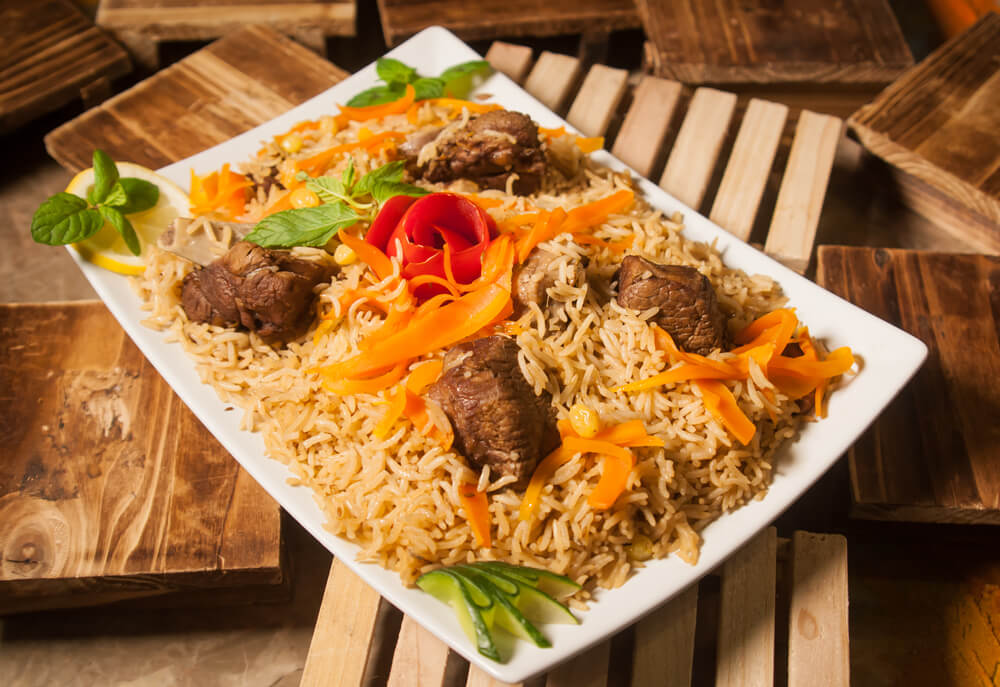
The rice used in Kabuli Pulao is long-grained Basmati rice in broth, giving this dish a beautiful brown texture.
Peshawari Chapli Kebab
Peshawari chapli kebab is a delicious and popular dish from Pakistan. It is made with ground beef, spices, onions, and fresh green chilies. The kebabs are flattened into patties and then fried in animal fat instead of oil. Chapli kebab can be of any meat, but locals prefer lamb meat.
They are usually served with naan bread, chopped onions, and mint yogurt.
Dum Pukht
Dum Pukht is the name of a cooking technique instead of a dish in which meat and vegetables cook over a low flame. Instead, the ingredients are put into dough-sealed pots and cooked over low flame.
Due to the long cooking time and low flame, the dish is very flavorful and succulent. Pashtuns cook mutton with vegetables like potatoes, tomatoes, ginger, and whole spices. You can enjoy this dish with naan or rice, depending on your preference.
To cut a long story short, every single dish of Pashtun cuisine is finger-licking, and you must try them all once you get a chance!
Pashtun Culture Festivals
Like all other Muslims, Pashtun celebrates the Islamic lunar calendar’s two major festivals, i.e., the Eid-ul-Fitr and Eid-ul-Azha. Moreover, it’s a tradition in Pashtun to celebrate all this happiness together with their friends and family. Therefore, all the people from the village gather to celebrate these festivals in the open sky.
The tenth Muharram commemorating the Martyrdom of Prophet Muhammad’s grandson is also a special day for Pashtuns.
Besides that, some other festivals are celebrated only by the Pashtun people, which are essential in their Culture.
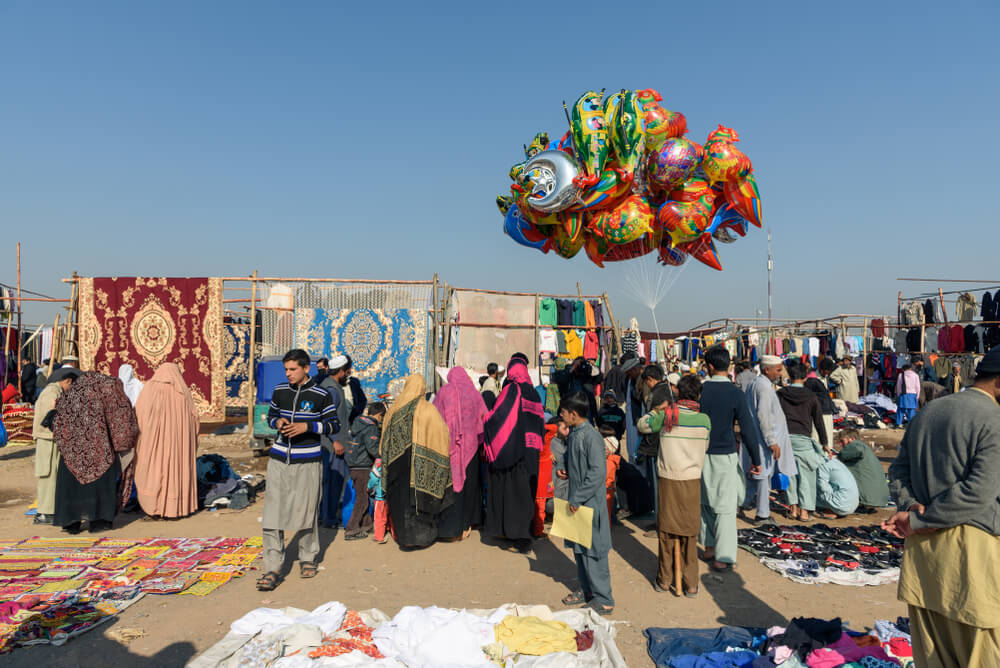
There are some specific Pashtun rituals and festivals, and these are celebrated with great enthusiasm.
Wada Koidana, Topak Tamacha, Gham Khadi, Kat Bistara, Hujra, and the arrival of the Spring season called “Nava Wroz” in Pashtun Culture means the New Day. Some Pashtuns also celebrate a prelude festival to Nava Wroz called Sheshbeeyeh. It’s an old tradition that is still celebrated in Waziristan.
Pakistan Independence day (August 14) is also a special occasion for Pashtuns. Pashtuns leave no stone unturned during the holidays to make their days full of fun and enthusiasm. They set up festivals and celebrate together by cooking and eating in the Parks.
Also, they make special prayers and attend mosques more often than usual.
Pashtun Culture Day
Pashtun Culture Day is celebrated on September 23 every year. It is a special occasion for Pashtuns as it is the day they can showcase their cultural heritage and traditions to the world.
Pashtuns dress in traditional clothes on this day and perform folk dances and music. They also prepare traditional dishes and share them with their friends and families.
The origin of this culture day dates back to 2015 when the Pashto officials and elders decided to celebrate a specific day for their Culture. The decision was taken during a three-day event named the “World Pashto Conference,” conducted in Quetta.
Pashtun culture day is a great way to learn about the rich culture of Pashtuns and to appreciate their customs and traditions. Pashtun or Pakhtoon are those people who are considered to be the bravest on the earth, and it may take a book to define their courage and bravery!
On culture day, they celebrate their happiness through different cultural shows and programs. Pashto poetry, music, and dance are some of the main attractions of this event.
Pashtun Culture Weddings
Pashtun weddings are an extraordinary and important occasion in Pashtun Culture. The parents of the boy plan the wedding affair, and the girl and the couple have no say in this, as Pashtuns are very conservative.
In the 19th and early 20th centuries, so many bizarre trends and customs related to Pashtun weddings slowly disappeared as time passed.
Still today, the conservative Pashtuns won’t let any bachelor of their society choose a suitor for himself, and it’s considered disrespectful to the extent that the boy may get disowned by his own family.
A Pashtun wedding usually takes place in the bride’s house, where a stage is set up for the groom and his friends to sit. The bride’s home is filled with women singing and dancing around her.
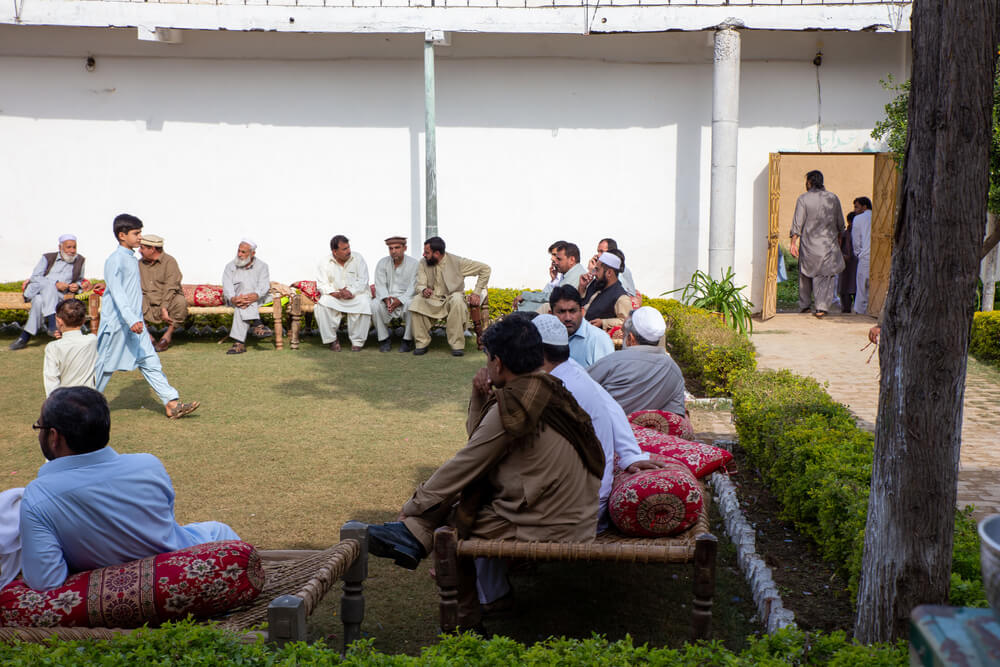
The Nikkah (marriage contract) is read out and signed by both families in front of witnesses.
Once this contract is signed, the groom is given a sheet to cover himself with, and he is not supposed to look back until he reaches home with his bride.
During this procession, the groom’s friends sing traditional Pashto songs and fire guns in the air.
Pashtun Culture Poetry
Pashtun poetry is significant in Pashtun Culture. It is used to express the emotions of love, sadness, joy, and pride.
Pashtun poets use metaphors and similes to describe the objects or feelings they are writing about.
Pashtun poetry is often sung as well as spoken. That is because Pashtun is very passionate and patriotic, and that’s quite obvious from their poetic skills. Some famous Pashtun poets are Rahman Baba, Khushhal khan Khattak, and Amir Kror Suri.
Let’s take a look at some of the poetry forms of Pashtuns.
Tappa
Tappa is the oldest and most famous form of Pashtun poetry. Tappa is a two-verse poetry in which the first verse is short while the second one is longer, and it beautifully portrays human emotions.
It’s the only form of poetry to express emotions during mourning and marriage. The Pashto musical instruments “Mangai” and “Rubab” are used to sing Tappa.
Neemakai
Neemakai is another prevalent form of Pashtun poetry. It consists of 1-3 lines in which the first and the last verse are shorter while the middle two are longer. Usually, in the middle of the song, the first lines are repeated.
Neemakai comprises Pashtun women, most of which are about love and daily life.
Charbetta
Charbetta is a kind of poem with unique rhythms and has four lines, but it can have six verses. All facts of life are addressed in this kind of poetry.
Usually, two or more musicians sing it as a part of the chorus, in which one musician recites the first verse while the rest sing the other verses.
Pashto Dance
Pashtun dance is an integral part of the Pashtun Culture. It is usually performed at weddings and other special occasions.
There are many Pashtun dances, each with unique steps and moves. Here are some of the Pashtun dance types:
Attan
The most popular type of Pashtun dance is the Attan, which groups of men and women often perform. The dance consists of 2-5 steps and ends with a clap while the dancers face the center. The exact process is repeated 2-3 times. While the dancers perform, the musician dictates the duration and speed of the dance.
Mahsud Dance
It’s a unique dance type performed using rifles by the Mahsud tribes of Pashtun. It was performed at war in early history but became a cultural dance later. The dancers carry guns in their hands while performing.
Waziri Dance
A flute player and two drummers play the background music for this type of dance. Then, two persons from the dancers leave the circle, dance toward the drummers, and come back dancing similarly.
Pashto Music
Pashtun music has a long and varied tradition. The theme of the Pashtuns is very different from that of the rest of Afghanistan. Pashto music is characterized by its use of the rubab, sitar, and tabla. Pashto music is often accompanied by dance.
Pashto music and poetry are similar; poetry is sung to make music. Pashto music often uses the poetry of Khushal Khan Khattak.
Pashtuns express their emotions and feelings through music, and most Pashto music consists of heroism, friendship, love, and bravery. Folk music is also trendy among the Pashtuns.
Pashto music has a wide variety of folk songs sung on different occasions. Pashtun music is prevalent in Pakistan and Afghanistan.
Pashtun Sports and Entertainment
Pashtuns participate in many different types of sports and do their best to win the game. The present-day Pashtuns are very competitive in sports and love to play cricket, football, volleyball, basketball, and many other sports. They are also very good at horse riding and wrestling.
Buzkashi, a sport introduced in the Mughal era, is popular among Pashtuns who love participating. The word “Buzz” means goat, and “Kashi” means pulling; the game is evident from its name. There are alliances between the individual players, and they team up against each other to remove a dead goat.
Pashtuns are also very good at hunting. They use different types of guns and rifles for hunting animals.
Frequently Asked Questions
What is Pashtun Culture famous for?
Pashtun Culture is famous for its music, poetry, and dance. Pashtuns are also very good at horse riding and wrestling. Not to forget the palatable Pashtun cuisine, which is a must-try!
What are Pashtun beliefs?
Pashtuns are mostly Sunni Muslims, but many Shia Muslims also exist. Pashtun people believe in Allah and his prophets, shortly in Islam. Pashtun people are very conservative and rigid when it comes to their religion and their beliefs.
How old is Pashtun Culture?
Pashtun Culture is around 2000 years old. It is one of the oldest cultures in the world. Pashtun Culture has been passed down from generation to generation and preserved well.
What do Pashtuns do for a living?
Pashtuns are primarily farmers, but many are involved in trade and business. In recent years, many Pashtuns have also become involved in the Pakistani and Afghan militaries.
How is Pashtun Culture different from other cultures?
Pashtun Culture is very different from other cultures in the region. One of the most significant differences is that Pashtuns are very proud and independent. They have always been fiercely independent people, reflected in their Culture. But on the other hand, Pashtuns are also very traditional and conservative.
Pashtun Culture is rich and unique. It has a long history and is very different from other regional cultures. Pashtuns are a proud nation that has successfully passed their beautiful traditions from one generation to another.
If you ever get a chance to interact with Pashtun Culture, take it! It will be an experience you will never forget.

